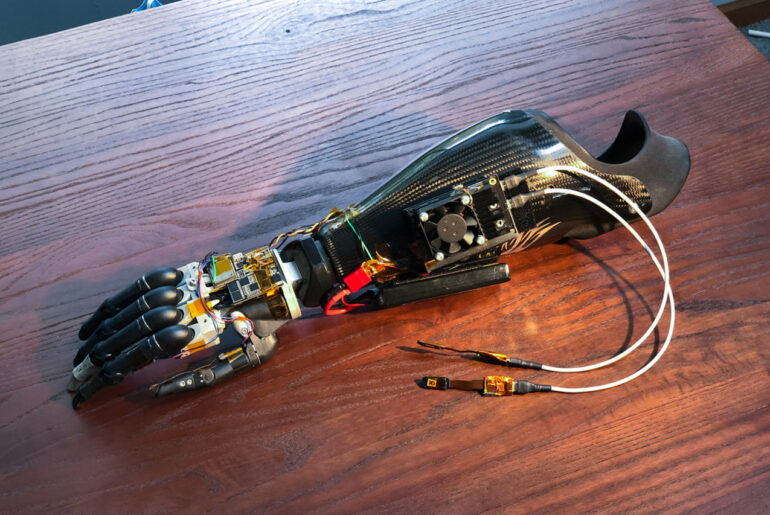
Photo credit: UMN
There’s robotic shoes, and then this mind-controlled robotic arm. University of Minnesota Twin Cities researchers used cutting edge technology and AI to enable amputees to move a robotic arm using their brain signals instead of their muscles, thanks to a small, implantable device that attaches to the peripheral nerve in a person’s arm
When this implant is combined with an artificial intelligence computer and a robotic arm, it’s capable of reading and interpreting brain signals, allowing upper limb amputees to control the arm using only their mind. Unlike other mind-controlled prosthetic limbs, this one uses machine learning to help interpret the signals from the nerve.
- BUILD WORKING ROBOTS: Teach your kids mechanical engineering in a way they can't resist! Designed for kids 12+, this kit will guide your learner...
- POWERED BY WATER: Use the power of hydraulics to harness and control the Hydrobot! The arm includes 6 different axes and can rotate up to 270 degrees...
- MOVES, ROTATES & GRABS: Use the levers to control the gripper which can open and close or be replaced with suction components to pick up objects

Artificial intelligence has the tremendous capability to help explain a lot of relationships. This technology allows us to record human data, nerve data, accurately. With that kind of nerve data, the AI system can fill in the gaps and determine what’s going on. That’s a really big thing, to be able to combine this new chip technology with AI. It can help answer a lot of questions we couldn’t answer before,” said Tuan Nguyen, a postdoctoral researcher and University of Minnesota Twin Cities biomedical engineering Ph.D. graduate.





